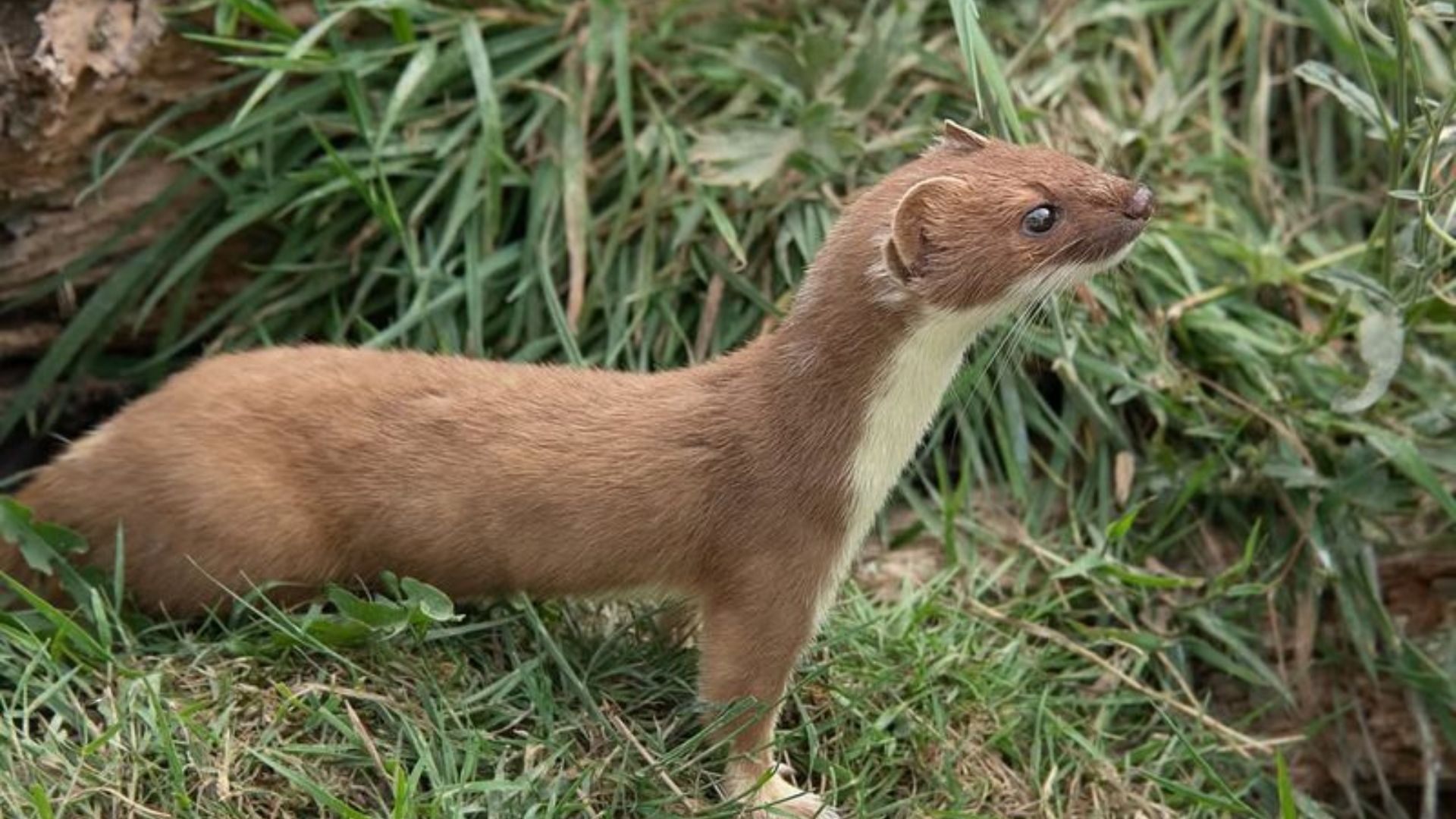Ferrets are charming creatures, known for their playful nature and slender bodies. However, there are many other animals that share similar physical attributes and are often mistaken for ferrets.
Let’s explore such intriguing animals that look like ferrets but belong to different species. Buckle up as we take you on a journey through the animal kingdom, uncovering fascinating facts and distinctions of these ferret doppelgängers.
1. Weasels
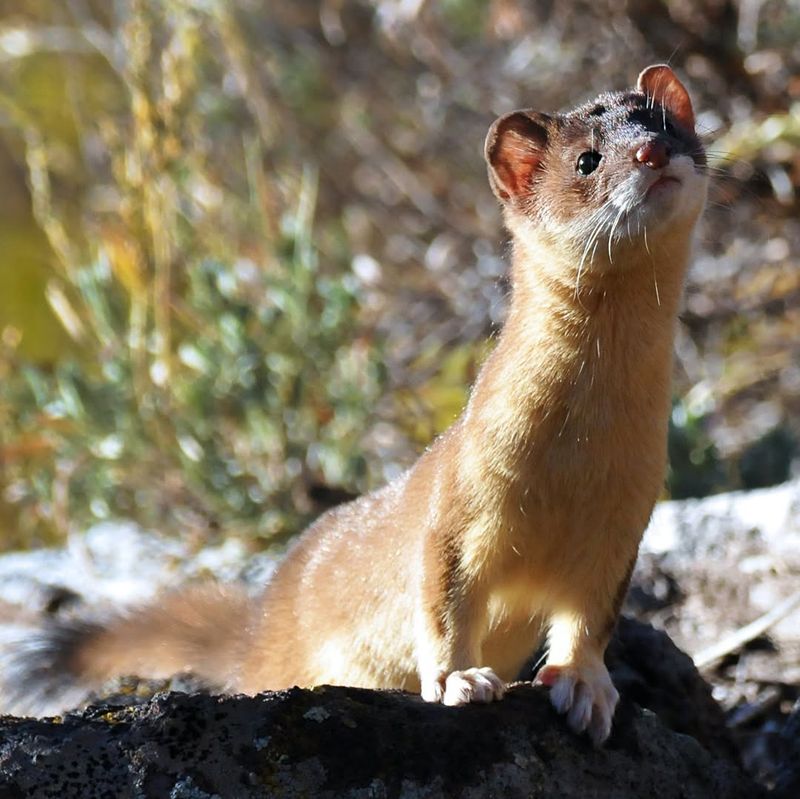
Weasels are small carnivorous mammals belonging to the genus Mustela, known for their elongated bodies and short legs. Often mistaken for ferrets due to their similar body shape, weasels are adept hunters, preying mainly on rodents.
They are found in a variety of habitats, from forests to grasslands. Despite their size, weasels are fearless predators.
Their coat changes color with the seasons, providing camouflage against predators and prey. In winter, they may turn white to blend into snowy environments. Weasels are solitary creatures, coming together only for mating.
They are also known for their cunning nature and speed, able to catch prey much larger than themselves. These fascinating creatures have made their mark in folklore and storytelling, often symbolizing determination and cleverness.
Weasels communicate using a variety of sounds, from chirps to hisses, to express different emotions and warnings.
2. Minks
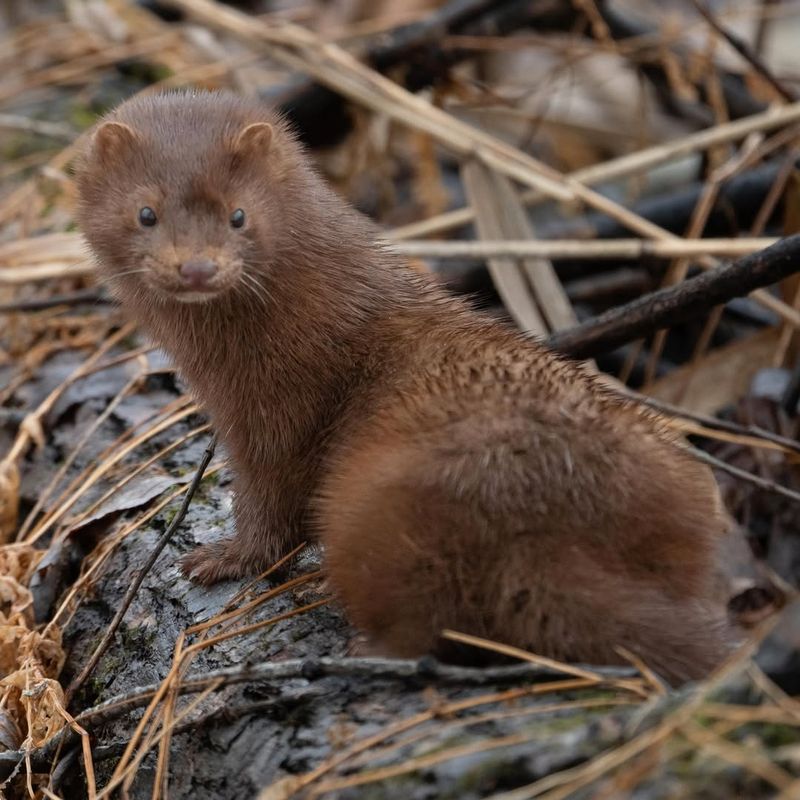
Minks are semiaquatic mammals known for their lustrous fur, which has made them a target for the fur industry. They resemble ferrets in their slim appearance but are distinct in their affinity for water. Found primarily in North America and Europe, minks inhabit riverbanks and wetlands.
They are excellent swimmers, using their webbed feet to navigate through water while hunting fish and aquatic creatures. Minks are solitary and territorial, often marking their territory with scent glands. Their diet is diverse, including birds, small mammals, and amphibians.
Social interactions among minks are rare, primarily occurring during the breeding season. These creatures are nocturnal, relying on their keen senses to hunt at night.
Though often in conflict with humans due to their hunting habits, minks play an essential role in controlling pest populations. Their adaptability to various environments is a testament to their resilience and survival skills.
3. Otters
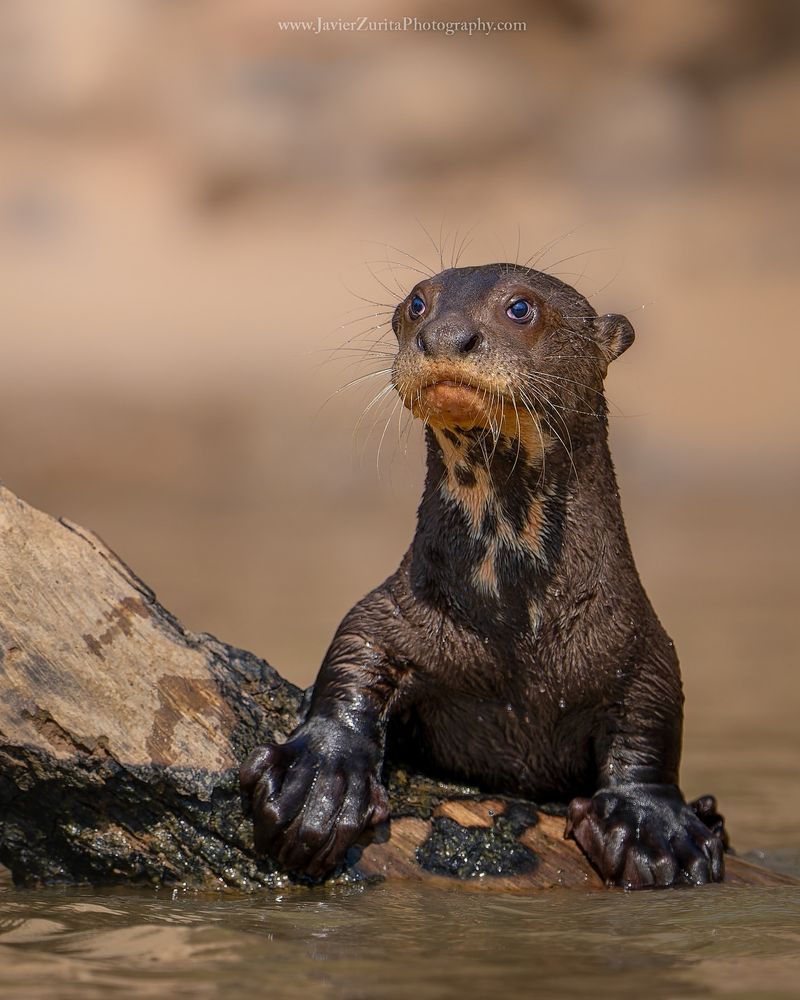
Otters are playful, aquatic mammals often seen frolicking in rivers and lakes. With their long, sleek bodies and webbed feet, they bear a resemblance to ferrets but are more robust and adapted to water life. Otters are found on every continent except Australia and Antarctica.
They are known for their social behavior, often living in groups and engaging in cooperative hunting. Otters have a varied diet, including fish, crustaceans, and small mammals. Their playful nature is not just for amusement; it helps them develop hunting skills and social bonds.
Otters are known for using tools, such as rocks, to open shellfish, showcasing their intelligence. They communicate through a series of chirps, whistles, and growls.
Otters are vital to their ecosystems, maintaining the balance by controlling fish populations. Their playful antics and charming appearance have made them a beloved creature in cultures worldwide.
4. Stoats
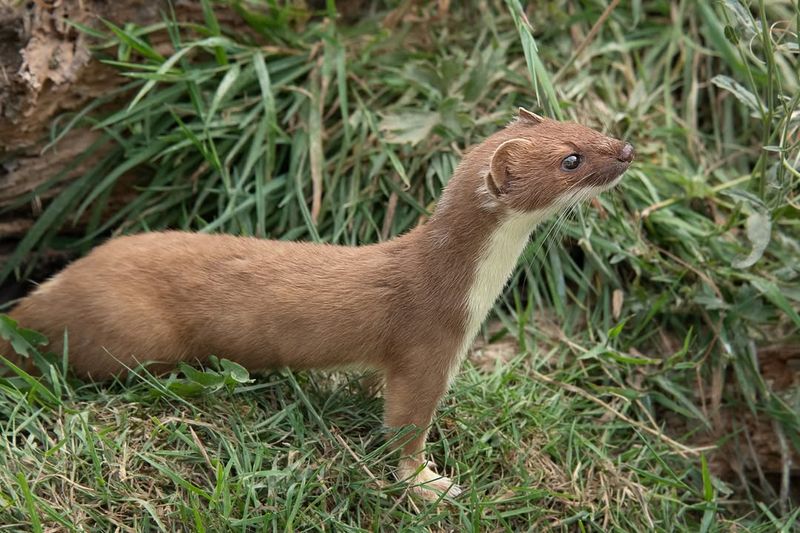
Stoats, also known as short-tailed weasels, are small mustelids with a striking seasonal coat change. In winter, they turn white except for the black tip on their tail, resembling a miniature ermine. This change aids in camouflage against predators and prey.
Stoats are found across the Northern Hemisphere, from North America to Europe and Asia. They are agile hunters, preying on rabbits, rodents, and birds. Their hunting technique involves a unique ‘dance’ that mesmerizes prey before attacking.
Stoats are solitary creatures, except during breeding season in spring. They have a fascinating reproductive strategy called delayed implantation, allowing them to time the birth of their young with favorable conditions. This adaptability ensures their survival in various environments.
Stoats play a crucial role in controlling pest populations, balancing ecosystems. Their dynamic behavior and striking appearance make them a captivating subject for wildlife enthusiasts.
5. Badgers
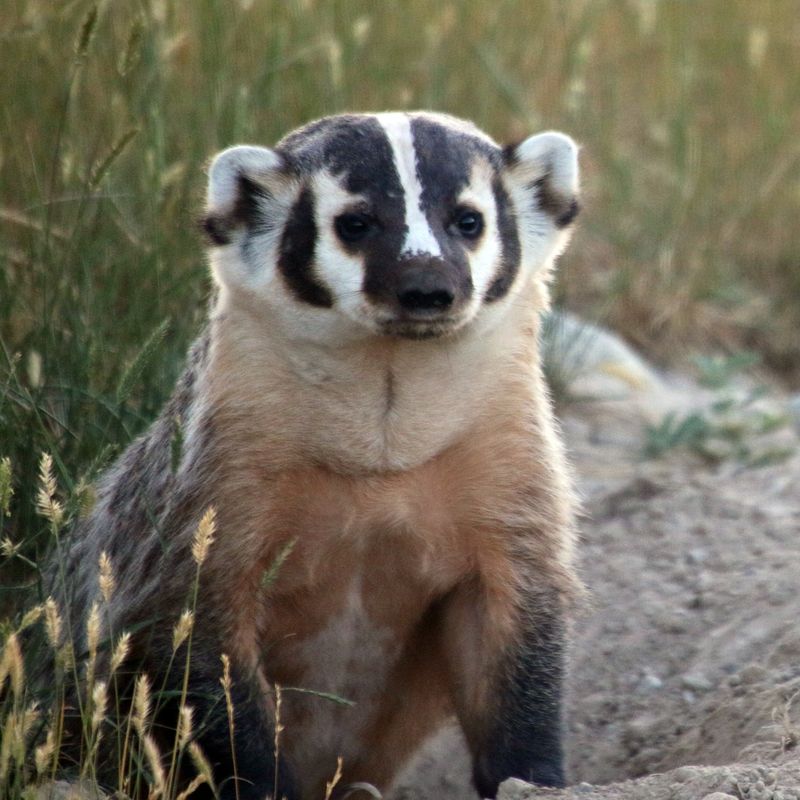
Badgers are robust, burrowing mammals known for their distinctive black-and-white facial markings. They differ from ferrets in their stocky build and digging prowess. Badgers are found in various habitats, including forests, grasslands, and suburban areas across Europe, Asia, and North America.
These social animals live in groups called clans, sharing extensive underground burrow systems known as setts. Badgers are omnivorous, with a diet ranging from earthworms and insects to fruits and small mammals.
Their strong forelimbs are adapted for digging, allowing them to create complex burrows.
Badgers are nocturnal, emerging from their setts at night to forage. They are known for their resilience and have been an emblem of endurance in folklore.
Badgers play a vital ecological role by aerating soil through their digging activities. Despite their tough appearance, they are gentle creatures, promoting biodiversity in their habitats by controlling insect and rodent populations.
6. Civets
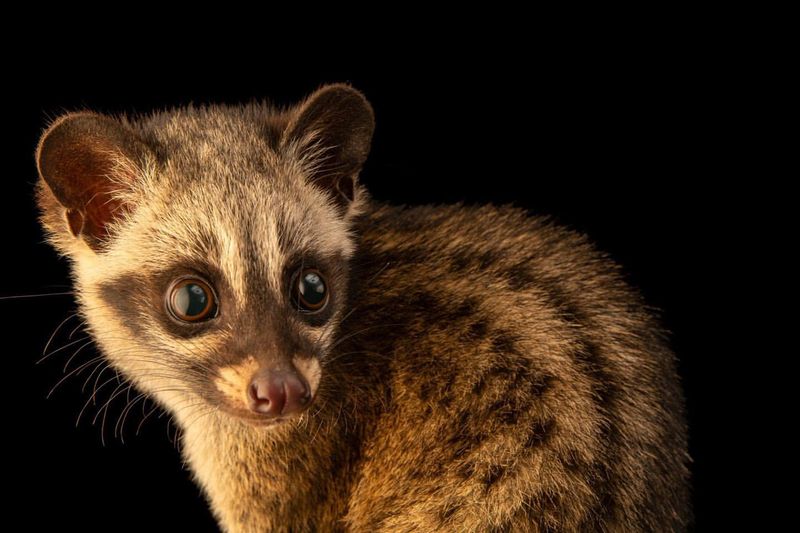
Civets are small, nocturnal mammals native to tropical Asia and Africa. They have a ferret-like slender body but are distinguished by their pointed faces and long tails. Civets are famous for producing civet coffee, made from beans they partially digest.
These creatures are solitary and elusive, using their keen sense of smell to navigate dense forests. Civets are omnivorous, feeding on fruits, insects, and small animals. They play a crucial role in seed dispersal, aiding in forest regeneration.
Civets communicate via scent markings and vocalizations, such as growls and hisses. Despite their solitary nature, they can be social during mating. Civets face threats from habitat loss and hunting for their musk, used in perfumes.
Conservation efforts are underway to protect these unique animals and their habitats. Their role in ecosystems as seed dispersers and their unique behavior make civets an intriguing subject for wildlife enthusiasts.
7. Pine Martens
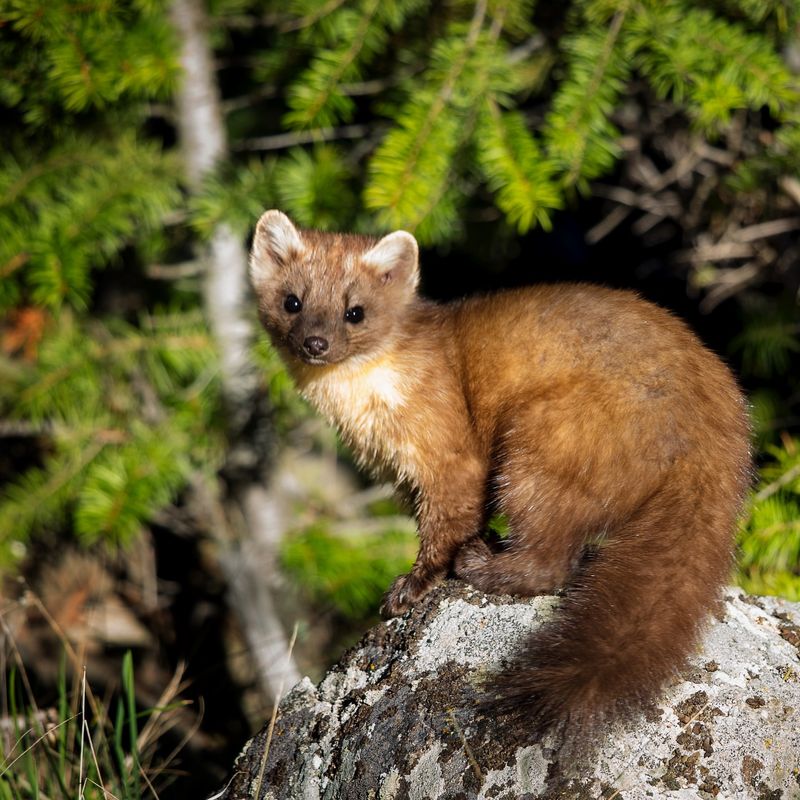
Pine martens are agile, tree-dwelling mammals found in northern Europe and parts of North America. With their slender bodies and bushy tails, they resemble ferrets but are more arboreal. Pine martens are known for their climbing prowess and are often seen leaping between branches.
These solitary creatures prefer dense forests, where they hunt small mammals, birds, and insects. Pine martens are also known to eat fruits and nuts, showcasing their omnivorous diet. They play a critical role in controlling rodent populations.
Pine martens are elusive, primarily active at dusk and dawn. They use scent markings to communicate and establish territory.
Despite their solitary nature, they are social during the breeding season. Pine martens have faced habitat loss due to deforestation, but conservation efforts have helped stabilize their populations. Their grace and agility in the treetops make them a fascinating species for wildlife watchers.
8. Meerkats
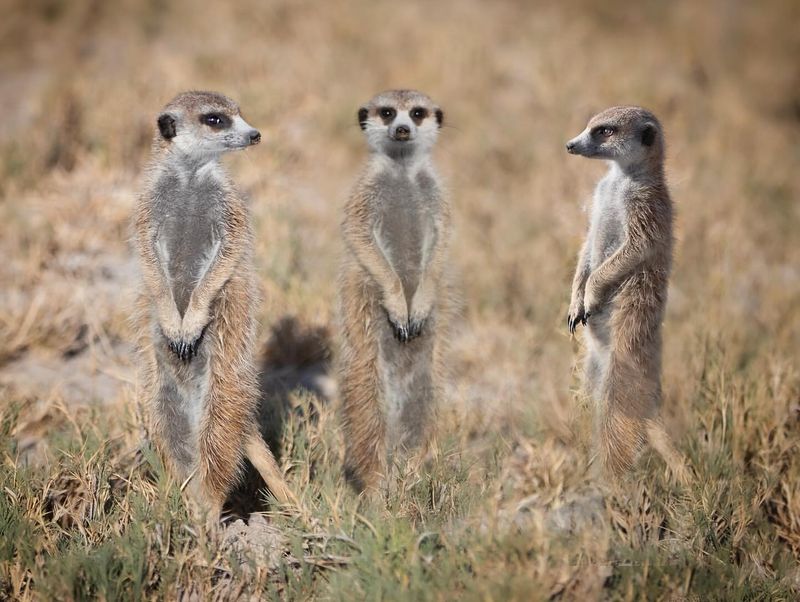
Meerkats are small, social mammals found in the deserts of southern Africa. Though they do not closely resemble ferrets, their slender bodies and lively behavior often draw comparisons. Meerkats are part of the mongoose family, known for their cooperative living in large groups called mobs.
These diurnal animals are famous for their vigilant lookout behavior, with one meerkat standing guard while others forage for food. Meerkats have a varied diet, including insects, small mammals, and fruits.
Their immune system is remarkably adapted to tolerate venom from scorpions, one of their prey.
Social bonds are strong within meerkat communities, with cooperative care of young and shared responsibilities.
Their social structure and behavior have been subjects of scientific studies, providing insights into complex animal societies. Despite their small size, meerkats are resilient survivors in harsh desert environments, embodying cooperation and adaptability.
Their charismatic nature and community dynamics captivate both researchers and animal lovers.
9. Skunks
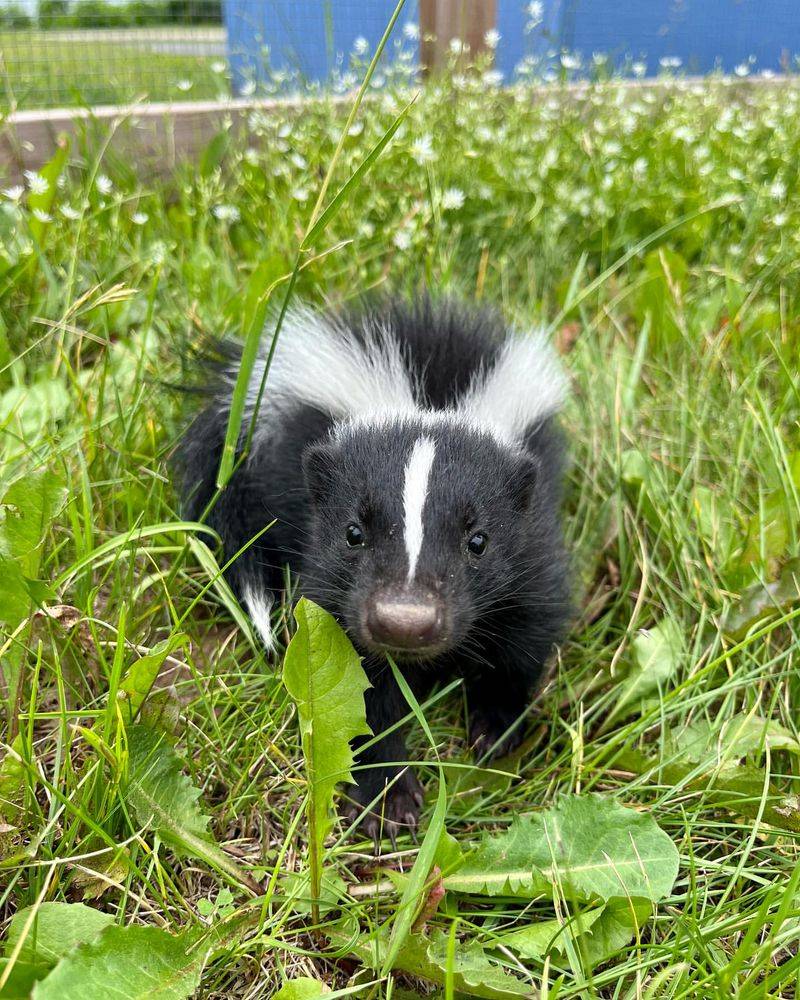
Skunks are small to medium-sized mammals known for their distinctive black-and-white coloration and infamous ability to spray a foul-smelling liquid as a defense mechanism. They have a ferret-like body shape but are easily identifiable by their unique markings.
Found across North America, skunks inhabit forests, grasslands, and urban areas. They are omnivorous, with a diet that includes insects, small mammals, and berries. Skunks are primarily nocturnal, foraging at night.
Despite their reputation, skunks are generally docile creatures, using their spray only as a last resort. They communicate through vocalizations and body language, warning potential threats before resorting to spraying.
Skunks play an essential role in controlling insect and rodent populations, benefiting their ecosystems. Their ability to adapt to various environments demonstrates their resilience.
The skunk’s notorious defense strategy and distinctive appearance make it a unique and often misunderstood mammal.
10. Polecats
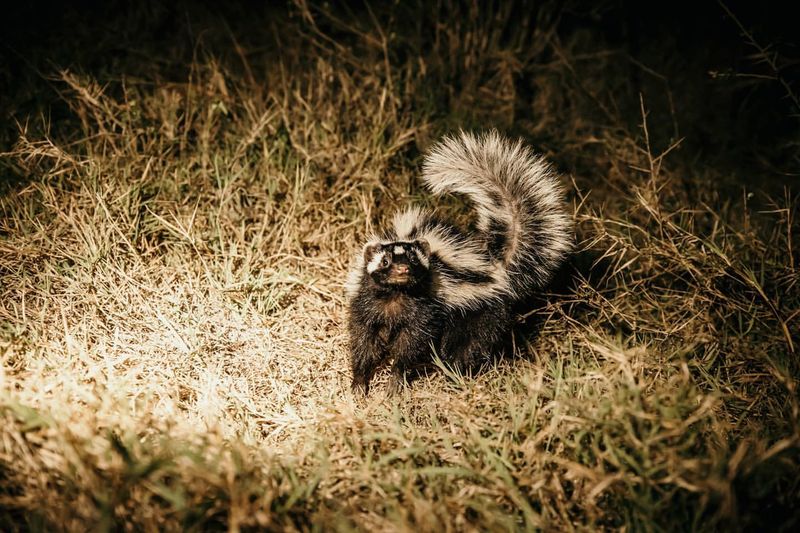
Polecats are small, carnivorous mammals found in Europe and Asia. Closely related to ferrets, polecats share a similar body structure but have distinct markings and behaviors. They have a dark mask across their face, giving them a bandit-like appearance.
Polecats inhabit forests, grasslands, and farmlands, where they prey on rodents, birds, and amphibians. Their hunting skills are exceptional, relying on stealth and agility to capture prey. Polecats are solitary creatures, marking their territory with scent glands.
They are most active during dawn and dusk, known as crepuscular behavior. Polecats have adapted well to human-altered landscapes, often living near farms. Their ability to control rodent populations makes them beneficial to agriculture.
Despite habitat loss and persecution, conservation efforts have helped polecat numbers recover in several regions. The polecat’s adaptability and role in pest control highlight its importance in maintaining ecological balance.
11. Mongooses
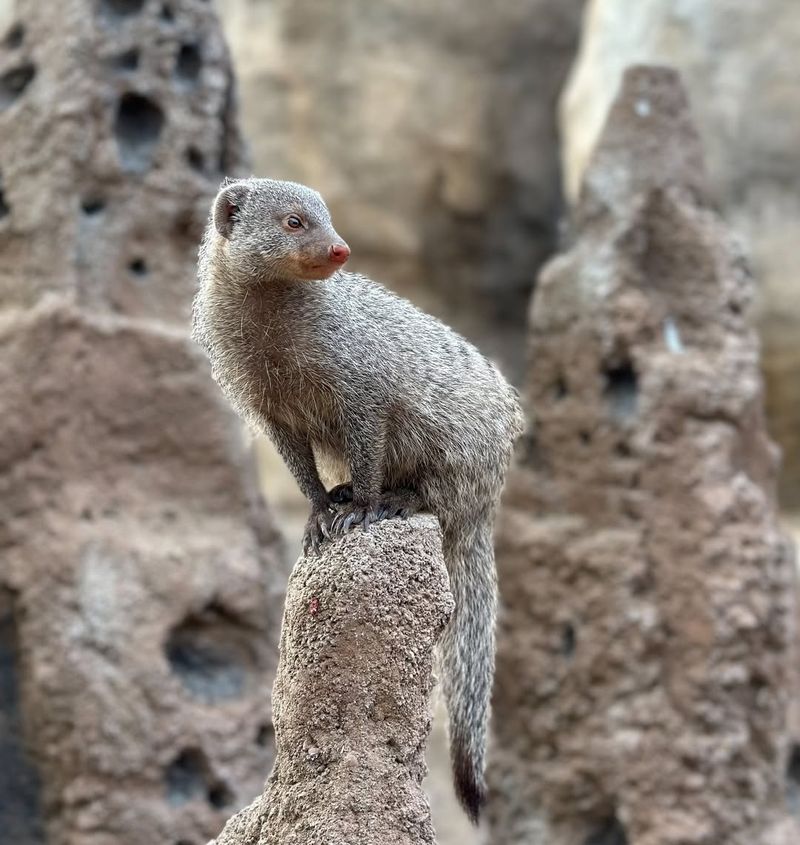
Mongooses are small carnivorous mammals found across Africa, Asia, and southern Europe. They share a similar body shape to ferrets but are unique in their resistance to snake venom. Mongooses are celebrated for their ability to fight and kill snakes, including cobras.
These creatures are highly social, living in groups with complex social structures. They communicate through vocalizations and body signals, exhibiting cooperative behaviors like collective rearing of young.
Mongooses have an omnivorous diet, including insects, small mammals, and fruit.
Their agility and speed are legendary, allowing them to capture fast-moving prey. Mongooses have adapted to a variety of environments, from forests to savannas.
Despite facing threats from habitat destruction, they remain resilient survivors. The mongoose’s ability to coexist with humans and control pest populations underscores its ecological significance.
Their bravery and social dynamics make mongooses a fascinating subject for wildlife enthusiasts.
12. Coatis
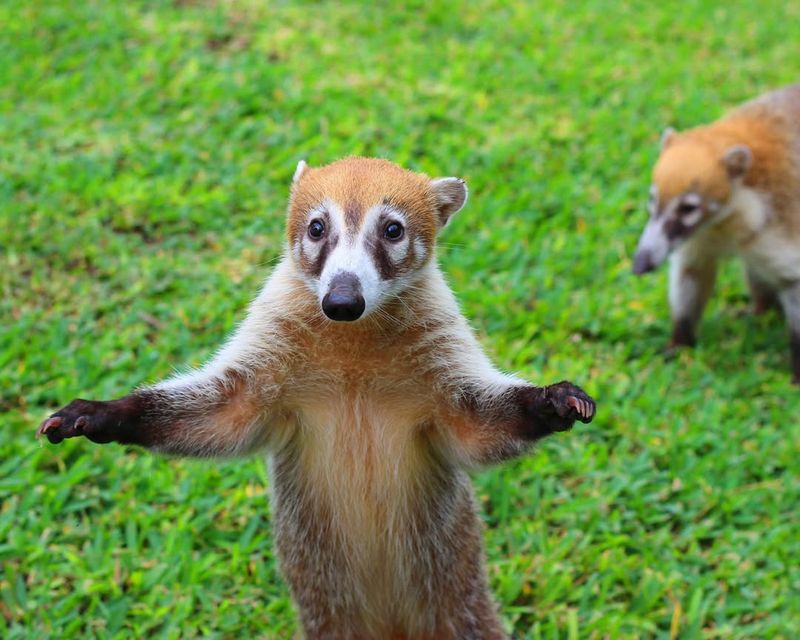
Coatis, also known as coatimundis, are members of the raccoon family found in Central and South America. They have a ferret-like body but are distinguished by their elongated snouts and bushy tails. Coatis are highly social animals, often seen in groups called bands.
These diurnal creatures are skilled climbers, using their long tails for balance as they forage for fruits, insects, and small animals. Coatis play a vital role in their ecosystems by dispersing seeds and controlling insect populations.
Their social structure involves complex communication through vocalizations and scent markings. Coatis are adaptable, thriving in a range of environments from rainforests to grasslands. Despite habitat fragmentation, coati populations remain stable due to their adaptability.
Their playful behavior and social dynamics make coatis an engaging and important species in their habitats. Their interactions and adaptability offer insights into the complexities of animal societies.
13. Wolverines
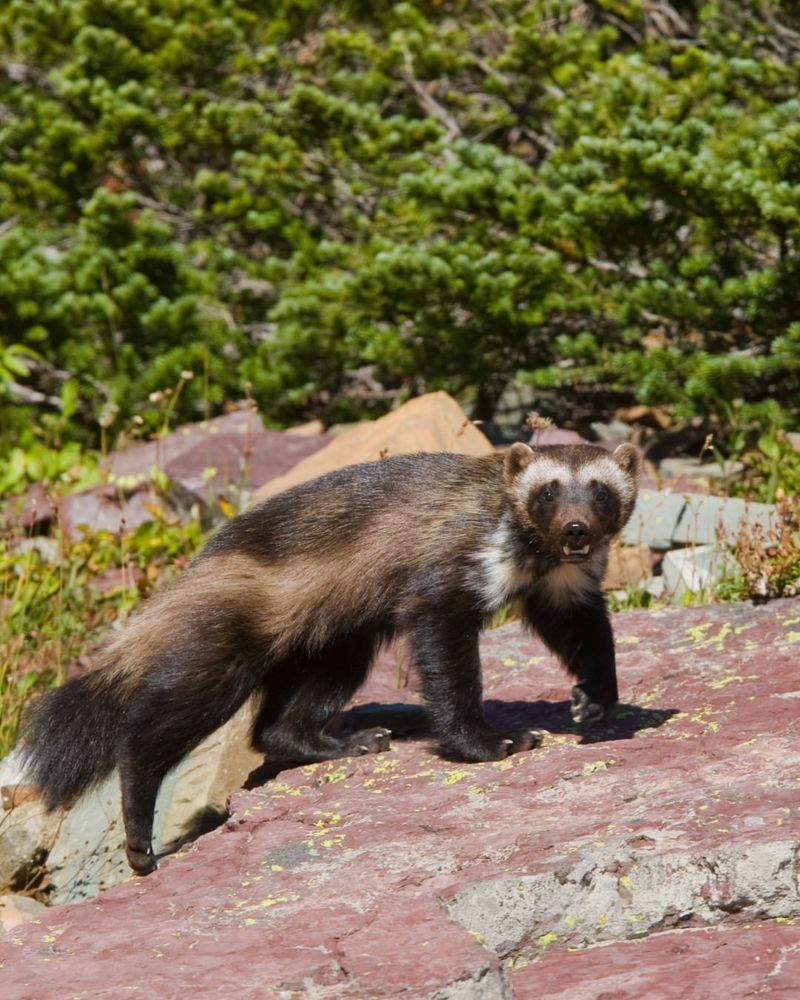
Wolverines are the largest members of the weasel family, known for their strength and ferocity. They have a ferret-like body shape but are much more robust and muscular. Wolverines are found in remote areas of the Northern Hemisphere, such as the Arctic and subarctic regions.
These solitary creatures are exceptional hunters, capable of taking down prey much larger than themselves. Wolverines have a varied diet, including small mammals, birds, and carrion. Their powerful jaws and teeth allow them to crush bones and access nutrients.
Wolverines are known for their endurance, often traveling vast distances in search of food. They play a crucial role in maintaining the balance of their ecosystems by controlling prey populations. Despite their elusive nature, wolverines are admired for their resilience and adaptability.
Their strength and tenacity have made them a symbol of wilderness and survival. Wolverines are a reminder of the harsh but beautiful realities of the wild world.

